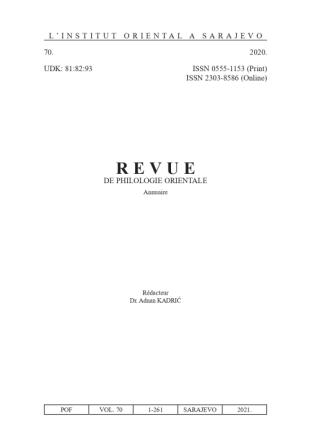Prilog likovnoj analizi arapskih rukopisa iz rukopisnog fonda Gazi Husrev-begove biblioteke: Rukopisi prepisivača mushafa
Contribution to the art analysis of the Arabic manuscripts: scriber’s mushaf manuscripts
Author(s): Haris DerviševićSubject(s): Museology & Heritage Studies, 17th Century, 18th Century, The Ottoman Empire, Qur’anic studies
Published by: Orijentalni Institut u Sarajevu
Keywords: mushaf; Qur’an; copists; scribes; calligraphy; Islamic culture;
Summary/Abstract: Copying the Qur’an, the mushaf, has a century-old tradition in Bosnia and Herzegovina. This exceptional project was done by various kinds of copyists – scribes and calligraphers. The mushafs copied by the calligraphers have lavish illumination and breathless calligraphy, their work almost always overshadows the work of “the ordinary scribes”. With a desire to point out the rich and layered tradition of copying the mushafs during the Ottoman period, this paper aims to present twelve manuscripts of the Qur’an from the collection of Gazi Husrev-beg library in Sarajevo. All chosen manuscripts date to the 17th and 18th centuries and were transcribed by Bosniak scribes. After a formal and stylistic analysis of the mushaf manuscripts, supported by palaeography and codicology, there is a clear difference between scribes – indolence and clumsiness is noticed in the work of some scribes, others have qualities that denominate them as naive calligraphers, while there is a very small group who imitate calligraphy rules.
Journal: Prilozi za orijentalnu filologiju
- Issue Year: 2021
- Issue No: 70
- Page Range: 221-245
- Page Count: 25
- Language: Bosnian

